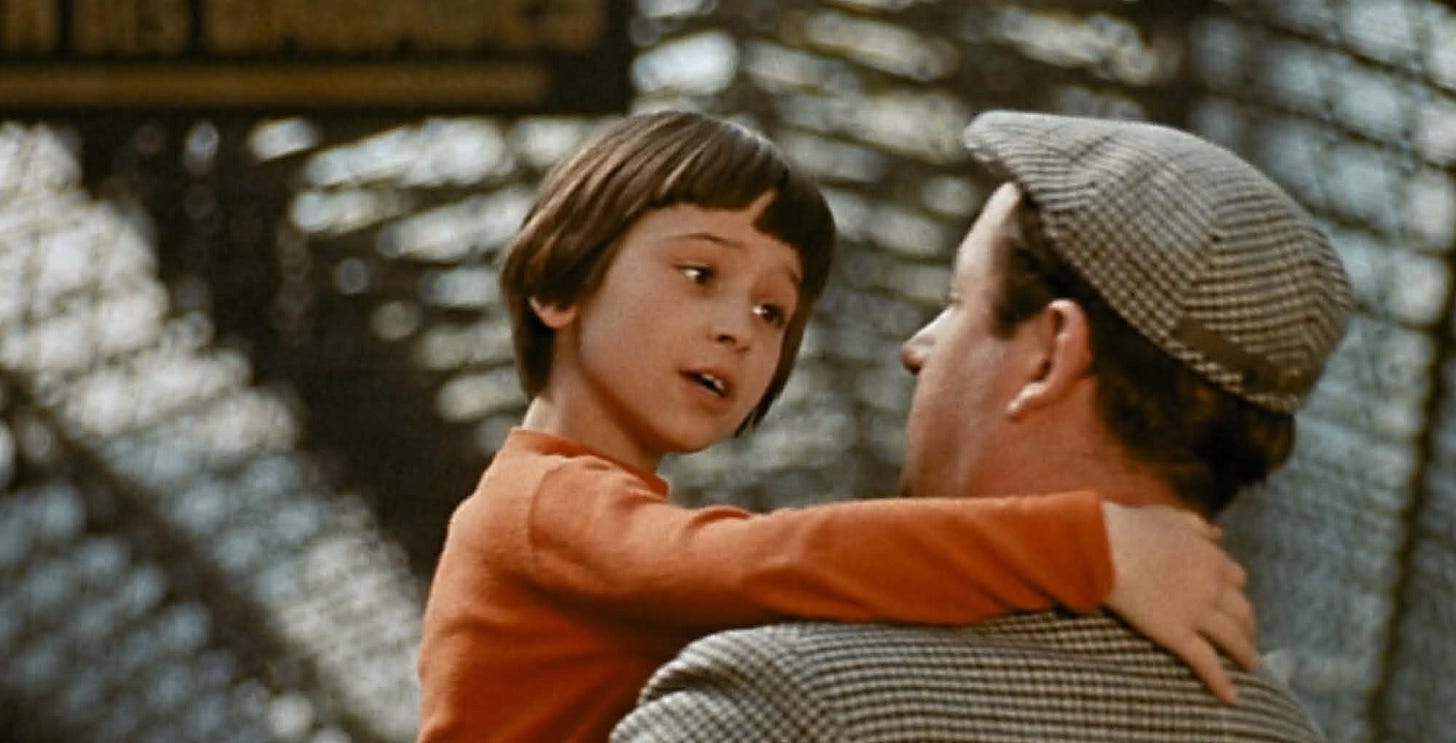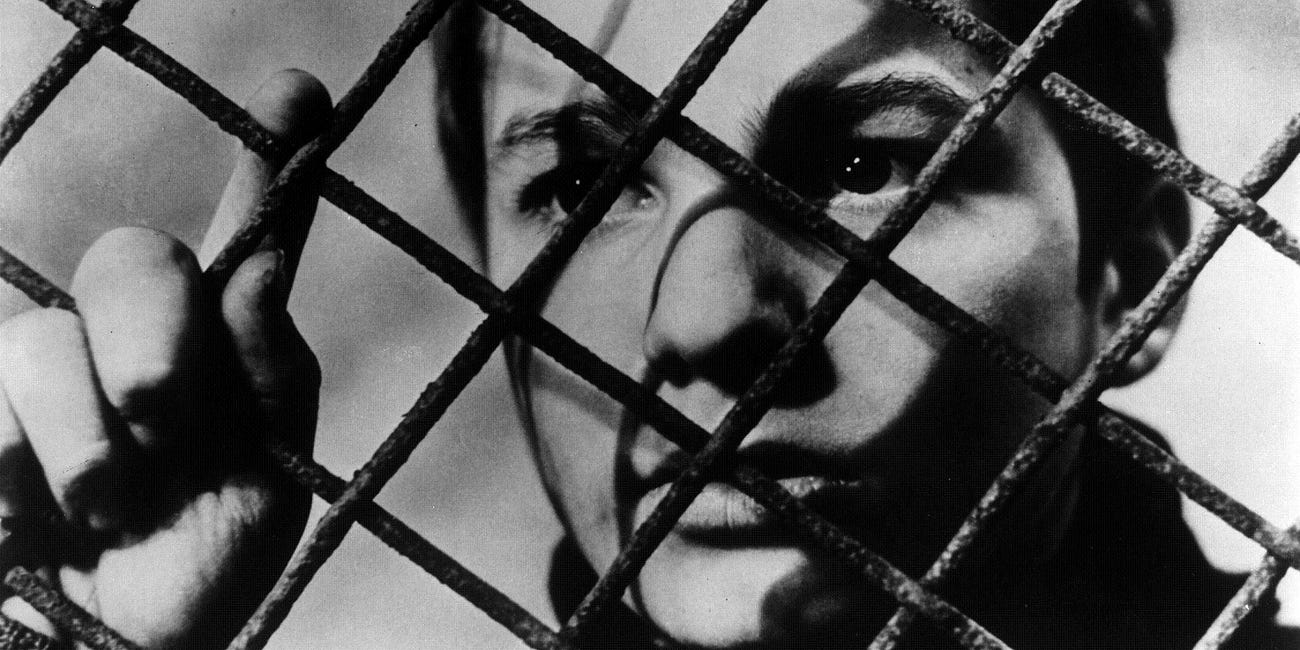Spoilers for Zazie dans le Métro (1960). Trigger warnings for discussions of child abuse
If it were made today, Louis Malle’s adaptation of Raymond Queneau’s novel – published just a year earlier – may have been called unfilmable. It was already nearly untranslatable, as Queneau used the story to play with the French language, using double meanings and colloquialisms to create a wild, often darkly funny, examination of Paris.
Louis Malle, who worked with William Klein to create the visual style of the film, approached the dense text as a way to explore cinematic language. In the process, the pair created something that stood out amongst their French New Wave contemporaries.
Whereas others were pulling back the curtain to tell their stories with portable equipment, capturing real life around their characters and then experimenting in the editing room. Malle leaned into the falseness of film; with large destructible sets, building a bustling, non-sensical Paris that fits within the childlike perspective of the source novel.
In doing so, he also softened some of the more uncomfortable humour within it. Zazie… is, at its heart, a film about growing up and while the ten-year-old protagonist is old beyond her years, the teenage Zazie in the source novel is subject to a crasser array of jokes, including paedophilia and incest.
Hints of these remain in the film but are more often said by the protagonist to confound and ultimately escape the adult characters. In the film, Zazie is old enough to understand that she should not know about sex and uses this to her advantage.
And it’s this difference between what a child knows, and what they understand, that informs so much of the film. When Zazie (Catherine Demongeot) arrives in the city – dropped into the care of her uncle Gabriel (Philippe Noiret) so that her mother can spend the weekend with a lover – all she wants to do is ride the Metro.
SCENES FROM A MOVEMENT: THE FRENCH NEW WAVE
“It feels like a sense of freedom. Anything can happen at any moment. Narrative is completely fractured”
However, the Metro workers are all on strike and so Zazie is dragged to Gabriel’s flat, where his wife Albertine (Carla Marlier) and landlord Turandot (Hubert Deschamps) are both taken aback by the attitude of the young girl. She escapes the landlord by claiming he is a paedophile, which sees him surrounded and berated by a crowd of onlookers.
Here, the adults listen to Zazie, as a series of half-heard and misunderstood rumours pass through the crowd; each one becoming more shocking than the last.
But Malle’s efforts are more focused on showing how adults do not listen to children, not unless the child speaks loudly and brashly enough to offend. When Zazie is later approached by a stranger (Vittorio Caprioli), who buys her jeans and a meal, she tries in vain to divert his attention.
As they eat, Zazie fabricates a story about her mother’s boyfriend, who became too ‘interested’ in the young Zazie and was subsequently murdered by the mother. The stranger is not interested in the story and wilfully ignores the child – even as background characters become more engrossed in both the tale and the messy way in which Zazie devours mussels.
There’s an irony here as well. Malle purposefully used the same backgrounds, regardless of whether Zazie or the stranger were in the foreground. The director believed that the audience would notice this subtle background joke and it would increase the humour of the scene. Instead, the crowds were so focused on Zazie and the story she was telling that they missed this completely.
The stranger ignores Zazie’s made-up warnings of death by axe because he is interested in the girl. And while Turandot is believed to be a predator, when the same group of onlookers see the well-put-together stranger, they believe him over the young girl.
It’s fitting that a film which revels in its own falseness. A film obsessed with its Dadaist imagery would make a point of how images can deceive. Zazie sees through this. Her childlike wonder in the Parisian streets allows her to cut through the unwritten rules that we live by. The stranger is well-dressed, but that does not mean he is a good man. Her uncle is a drag artist, but it does not mean he is a homosexual.
In a film where children are ignored and the image is everything, Malle is quick to show that what we see is often a bigger lie than what we say and that a child is far less likely to hide something than even the most respectable adult.
Director: Louis Malle
Writers: Louis Malle, Jean-Paul Rappeneau. Based on the novel of the same name by Raymond Queneau
Starring: Catherine Demongeot, Philippe Noiret, Hubert Deschamps, Carla Marlier, Annie Fratellini, Vittorio Caprioli










